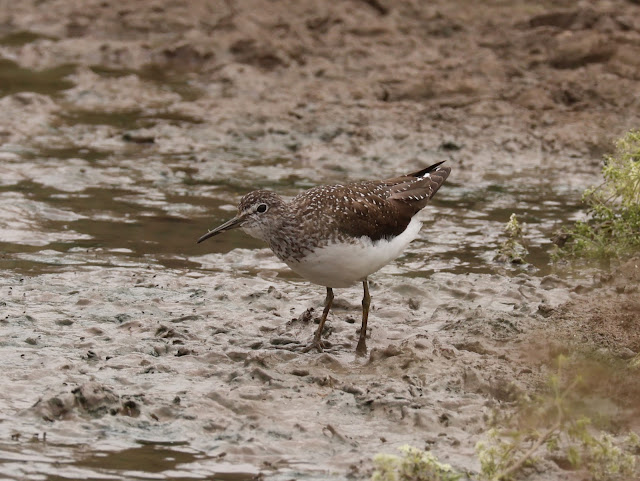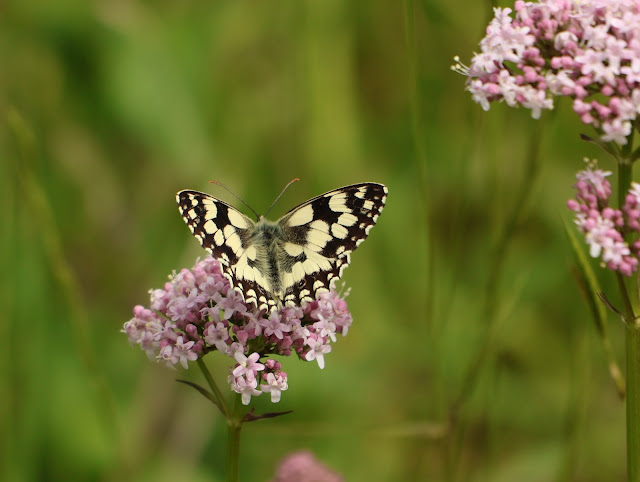I finally caught a glimpse of the white spotted bluethroat at Slimbridge today, it was only a distant sighting but at least a tick for the year and only 5 minutes or so after my arrival. I had headed out on the summer walkway to the sea wall viewing point, as this bird seems to prefer mornings to perch visibly out in the reed bed. On two previous visits I had failed to see it so decided to make one more attempt. Viewing is generally pretty distant, as it perches on some tall sticks which have been set up at a few points amongst the reeds. Today it chose the furthermost point away but through binoculars I was able to make out its colouring even though it was too far for any photos.
There was a brisk wind blowing, so after waiting a further half an hour with no further sightings, I decided to return to the main part of the reserve, and see what else was about.
From a couple of hides along the walkway which looked out over the Tack Piece, I saw my first green sandpiper of the year and in the Rushy Pen there were good numbers of avocets with young, as well as broods of ducklings and goslings.
I spent some time at the Discovery Hide looking over South Lake, where some black tailed godwits were looking great in their summer plumage and black headed gull chicks were changing into adult plumage.
The other hide which looks over South lake had 3 further green sandpipers, one of which was giving especially good views as it searched for food amongst the mud in front of the hide.























































.JPG)
